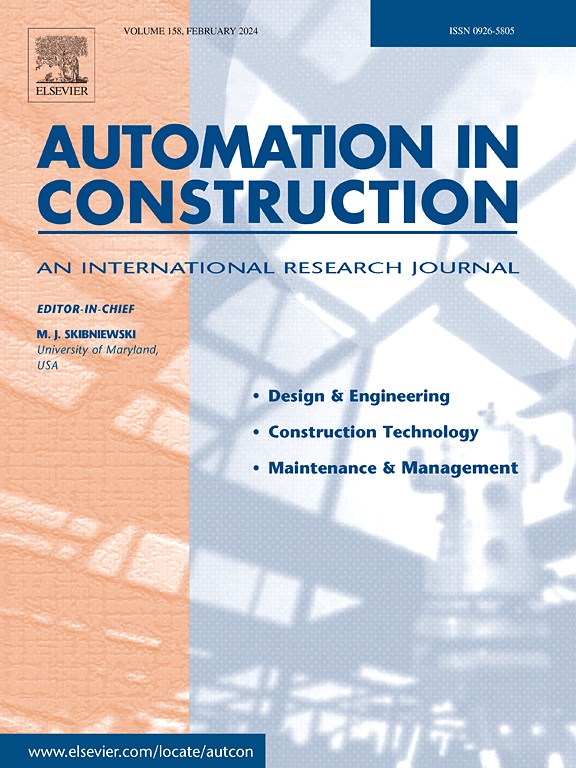bim驱动的软件和算法优化地砖布局,最大限度地减少材料浪费
IF 11.5
1区 工程技术
Q1 CONSTRUCTION & BUILDING TECHNOLOGY
引用次数: 0
摘要
最先进的BIM软件无法提供有效的解决方案,因为不准确的数量起飞(QTO)、内部障碍物识别和3D可视化。这可以最大限度地减少地板覆盖物的浪费。本文开发了基于bim的软件,建立被覆盖表面与房间结构和建筑元素之间的语义关系,以计算精确的QTO。软件中嵌入了一个瓷砖布局算法,该算法考虑房间的几何形状、房间内的障碍物和瓷砖大小,以确定最有效的布局,最大限度地减少材料的切割和浪费。该算法在案例研究中减少了高达73%的材料浪费,以验证所提出的方法。基于bim的软件有利于设计师和建筑公司,减少材料浪费,促进可持续发展。该解决方案启发了未来更有效的瓷砖布局设计算法和基于bim的建筑活动废物评估。本文章由计算机程序翻译,如有差异,请以英文原文为准。
BIM-driven software and algorithm for optimal floor tile layout minimizing material waste
State-of-the-art BIM software cannot provide effective solutions for tile placement across spaces due to inaccurate quantity take-off (QTO), internal obstacle recognition, and 3D visualization. This prevents minimizing the waste material of floor covering. In this paper, BIM-based software is developed to establish semantic relationships between the covered surface and the room's structural and architectural elements to compute exact QTO. A tile layout algorithm is embedded to the software which considers the geometry of the room, the obstacles inside the room, and tile size to determine the most efficient layout that minimizes material cut and waste. The algorithm reduced material waste up to 73 % in case studies conducted to validate the proposed approach. The BIM-based software is beneficial for designers and construction firms, reducing material waste and promoting sustainability. The solution inspires future work on more efficient algorithms for tile layout design and BIM-based waste assessment of construction activities.
求助全文
通过发布文献求助,成功后即可免费获取论文全文。
去求助
来源期刊

Automation in Construction
工程技术-工程:土木
CiteScore
19.20
自引率
16.50%
发文量
563
审稿时长
8.5 months
期刊介绍:
Automation in Construction is an international journal that focuses on publishing original research papers related to the use of Information Technologies in various aspects of the construction industry. The journal covers topics such as design, engineering, construction technologies, and the maintenance and management of constructed facilities.
The scope of Automation in Construction is extensive and covers all stages of the construction life cycle. This includes initial planning and design, construction of the facility, operation and maintenance, as well as the eventual dismantling and recycling of buildings and engineering structures.
 求助内容:
求助内容: 应助结果提醒方式:
应助结果提醒方式:


